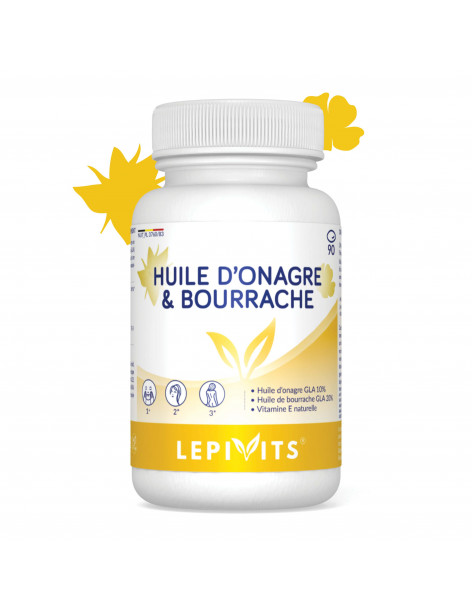Essential fatty acids
Fatty acids are broadly divided into three categories:
- Saturated fatty acids: mainly found in palm oil and animal fats, such as cold cuts, butter and cream, cheese etc., they promote bad cholesterol in the arteries and increase the risk of cardiovascular disease;
- Unsaturated fatty acids, which can be monounsaturated (omega-9) or polyunsaturated (omega-3 and omega-6): they protect the cardiovascular system and should normally represent the major part of the daily fat intake, although they are as caloric as saturated ones. They are mainly found in plant products and oily fish, such as salmon, tuna, herring etc. ;
- Trans fatty acids, or hydrogenated fats, are compounds manufactured by the food industry as a stable and easy alternative to natural fatty acids. They are controversial because of their danger to the heart and blood vessels. They are found in industrial and canned foods.
What are essential fatty acids?
The so-called essential fatty acids are found in the category of polyunsaturated fatty acids (PUFAs). They are so named because they are essential to our metabolism, except that they cannot be synthesised by our body, or in very small quantities. We are therefore obliged to consume them through our diet or through food supplements.
What are essential fatty acids used for? They are at the origin of the manufacture of all the cells of the body, but also of certain hormones. The main ones are :
- Omega-3 fatty acids, which are derived from alpha-linoleic acid, mainly consisting of eicosapentaenoic acid (EPA) and docosahexaenoic acid (DHA);
- Omega-6 fatty acids, whose sources are linoleic and gamma-linolenic acids.
Why consume omega-3?
Omega-3s are the most common polyunsaturated fatty acids. They come directly from alpha-linoleic acid, unlike omega-6 which comes from linoleic and gamma-linoleic acids (GLA).
What is the role of omega-3? These acids form the structure of our cells and promote the action of cellular mediators. In particular, they help to stimulate muscles, dilate bronchial tubes and arteries, and ensure that inflammatory reactions and blood pressure function properly.
What are the benefits of omega-3? By ensuring blood circulation, omega-3s protect brain capacity. It is thanks to them that neurotransmitters communicate with each other and allow neuronal longevity. In fact, there are many studies showing the effect of omega-3 on Alzheimer's disease. But omega-3 fatty acids have many additional virtues: bone construction, skin elasticity, visual acuity, hormonal regulation, energy production, etc. Omega-3s are especially recognised for their natural anti-inflammatory properties, thanks to their EPA and DHA content.
The omega-3/omega-6 ratio
These two fatty acids are essential to our body, but act in opposite ways: omega-3s are anti-inflammatory, while omega-6s are pro-inflammatory. They each have their own nutritional role on our metabolism and are therefore complementary, at least in a certain dosage.
Indeed, the omega-3/omega-6 balance, which should follow a ratio of 1 to 5 for optimal cardiovascular health, is very poorly respected in Europe and leads to chronic diseases such as obesity or diabetes. In fact, we consume almost 3 times too much omega-6. This is partly explained by the omega-6-rich cereals that make up the bulk of our diet and that of farm animals (sunflower, corn, soya).
The best sources of essential acids
Où trouver des oméga-6 ? On les retrouve dans de nombreuses huiles (tournesol, maïs, soja), ainsi que dans les viandes issues des animaux nourris à ces céréales, mais également dans les aliments gras transformés, comme la charcuterie et les chips. Les bonnes sources d’acides gras oméga-6 sont surtout l’huile de bourrache et l’huile d’onagre, qui ont des propriétés assez proches, notamment dans le soulagement des symptômes liés au cycle menstruel. Ces deux huiles sont les aliments qui contiennent le plus de GLA et d’acide linoléique (environ deux tiers de leur composition). Vous trouverez de l’huile d’onagre et bourrache d’origine biologique chez Lepivits.
What are the sources of omega-3? Mainly fatty fish (salmon, tuna, sardines, herring) and oils such as rapeseed, walnut, flax or hemp. Cod liver oil, found at Lepivits, is one of the oils with the highest level of omega-3, as are all fish oil-based food supplements.
Where can I find omega-6? They are found in many oils (sunflower, corn, soybean), as well as in meat from animals fed on these grains, but also in processed fatty foods, such as cold cuts and chips. Good sources of omega-6 fatty acids are mainly borage oil and evening primrose oil, which have similar properties, especially in relieving symptoms related to the menstrual cycle. These two oils are the foods that contain the most GLA and linoleic acid (about two-thirds of their composition). You can find organic evening primrose and borage oil at Lepivits.







